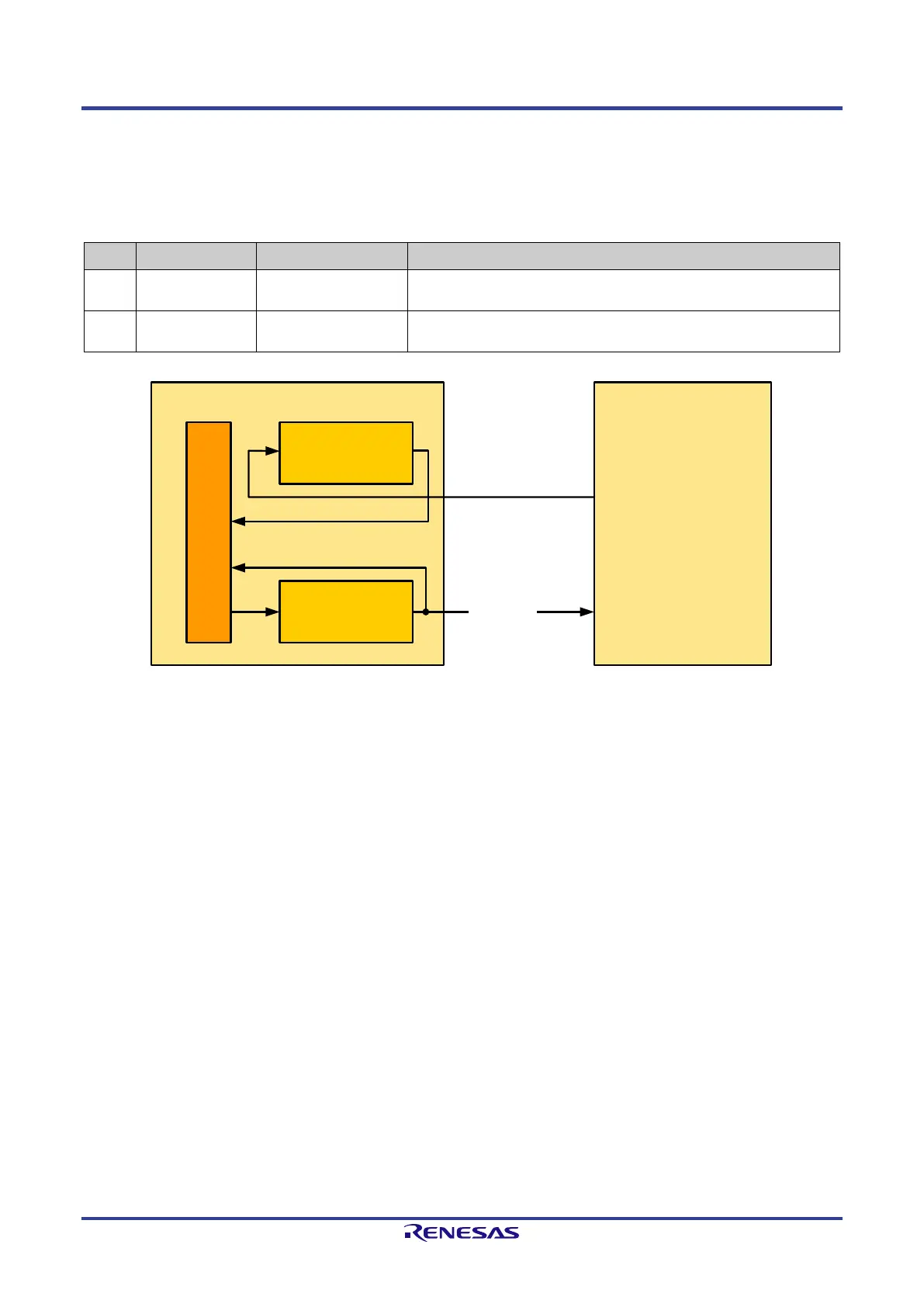TPS-1 User’s Manual: Hardware 7. TPS-1 Watchdog
R19UH0081ED0107 Rev. 1.07 page 49 of 86
Jul 30, 2018
7. TPS-1 Watchdog
The TPS-1 contains two watchdog controllers. One is used to control the PROFINET CPU. The other shall be used to control the connected Host CPU.
The signals WD_IN and WD_OUT are used by the host CPU and the TPS-1 for mutual supervision and to force a restart if necessary.
Table 7-1: Watchdog signals
Pin Signal TPS-1 Description Remark
A11 WD_IN Watchdog Input
(from the Host)
This signal triggers the TPS-1 watchdog that monitors the Host
CPU. A rising edge of this signal restarts the watchdog counter.
(to the Host)
This signal is set when a watchdog trigger of the TPS-1 occurs
(active low).
TPS
-1 Host CPU
WD_OUT
Watchdog 0
Watchdog 1
WD_IN
ExtTrigger
ExtTrigger
TPS-CPU
CPU RESET
CPU Interrupt
Figure 7-1: TPS-1 Watchdog Lines
7.1. Signal WD_OUT (pin B12)
The WD_OUT signal is processed by the TPS-1. The TPS-1 starts its watchdog during start up (the signal is set to high level during power up). This is
done by the TPS-1 firmware
The signal WD_OUT indicates that a watchdog error occurs inside the TPS-1.
A watchdog error forces the TPS-1 to a reset. All communication connections to a controller are dropped down.
After a restart of the TPS-1, the host must configure the TPS-1 again.
If you are using the HOST-Interface, the external CPU must guarantee a secure behavior of the process output signals in case of a TPS-
1 Watchdog.
In case of using the local IO interface, additional circuitry must avoid insecure signals for process outputs.

